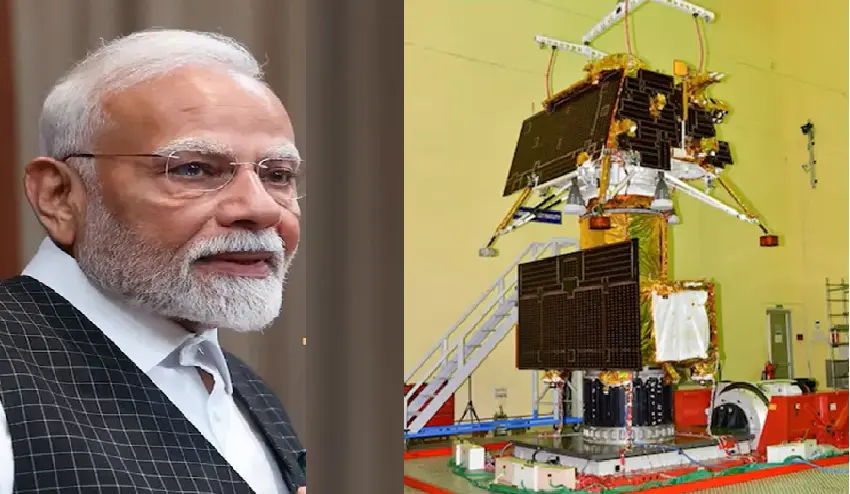
India and Japan unite for Chandrayaan-5 Moon mission, exploring the lunar south pole with advanced tech and shared vision
A New Space Friendship Begins
Moon Mission United – India and Japan have taken a big step together in space exploration. During his visit to Tokyo on August 29, 2025, Prime Minister Narendra Modi announced that India’s space agency ISRO will work with Japan’s JAXA on the Chandrayaan-5 mission. This exciting partnership will send a new spacecraft to the Moon, aiming to explore its mysterious south pole.
This mission is not just about science, it’s also about friendship. PM Modi and Japanese Prime Minister Shigeru Ishiba met at the India-Japan Annual Summit and agreed to work together on many things, including space, technology, and green energy. The Chandrayaan-5 mission is a symbol of how two countries can come together to achieve something amazing.
What Is Chandrayaan-5 All About?
Chandrayaan-5 is India’s next big Moon mission, planned for launch around 2027–2028. It will be part of the Lunar Polar Exploration (LUPEX) program, which focuses on studying the Moon’s south pole. This area is very special because it may have water ice hidden in its shadows, a key resource for future space missions.
Here’s what makes Chandrayaan-5 different:
- It will use Japan’s powerful H3 rocket to launch into space.
- ISRO will build the lander that touches down on the Moon.
- JAXA will create the rover that explores the surface.
- The rover will be much heavier than before – about 250 kg, compared to the 25 kg Pragyan rover used in Chandrayaan-3.
This mission will help scientists learn more about the Moon’s surface, its water ice, and how future astronauts might live and work there.
Why the Moon’s South Pole Matters
The Moon’s south pole is one of the most mysterious places in our solar system. It has areas that are always in shadow, which means they are extremely cold and may hold frozen water. Finding water on the Moon is a big deal, it could be used for drinking, making oxygen, or even fuel for rockets.
Chandrayaan-5 will explore these shadowed regions to:
- Search for water ice.
- Study the soil and rocks.
- Understand how the Moon formed and changed over time.
This knowledge will help scientists plan future missions, including ones where humans might live on the Moon for long periods.
Moon Mission United India and Japan: A Powerful Team in Space
This partnership between ISRO and JAXA shows how international teamwork can lead to great discoveries. PM Modi said that this collaboration is not just between governments—it also connects industries, startups, and researchers from both countries. He called it an “ecosystem where innovation flows both ways from labs to launch pads.”
India has already shown its strength in space with missions like Chandrayaan-3 and the Mars Orbiter. Japan has also done impressive work, including sending spacecraft to asteroids. By joining forces, they can share knowledge, technology, and dreams.
PM Modi also praised India’s space journey, saying it’s a story of “determination, hard work, and innovation”. With Chandrayaan-5, that story continues, this time with a trusted friend by India’s side.
Final Thoughts: A Giant Leap Together
The Chandrayaan-5 mission is more than just a trip to the Moon. It’s a symbol of hope, unity, and progress. India and Japan are showing the world that when countries work together, they can reach for the stars, literally.
As we look forward to the launch in a few years, one thing is clear: the future of space exploration is not just about rockets and rovers. It’s about building bridges across borders, sharing dreams, and exploring the unknown together.
Also read – India and Japan Join Hands to Build a New Tech Future – Away from China
Stay informed with the latest news and updates – only on Rapido Updates.